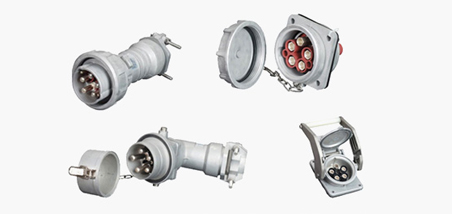How to maintain high current plugs and sockets?
High current plugs and sockets are often used in electrical equipment and systems that require high current loads, and are widely used in various industrial equipment, electrical equipment, and energy storage systems. In this kind of high-load, high-precision working environment, the maintenance of high current plugs and sockets is an important part of ensuring their normal and safe operation and extending their service life.

Key points for the maintenance of High current plugs and sockets
1. Regular inspection
Every once in a while, check the appearance of the plugs and sockets for signs of damage, deformation, or burning. These problems may indicate overload, short circuit, or other electrical faults. Check whether the connection between the plug and the socket is tight and make sure there is no looseness or poor contact. Loose connections may cause increased resistance, which can cause overheating and energy loss. Use a dry soft cloth or a special cleaning tool to clean the socket regularly to remove dust, cobwebs and other debris. This helps to maintain good contact of the socket and prevent poor contact or short circuit caused by debris.
2. Avoid overload
When using high current plugs and sockets, be sure to understand their rated load. Do not connect electrical equipment that exceeds the rated load of the socket to avoid overload and cause failure or even fire. Avoid using multiple high-power electrical devices at the same time to reduce the load on the socket. If necessary, consider using a socket or power distributor with overload protection.
3. Moisture and dustproof
Keep the plug and socket away from water and humid environments to prevent moisture intrusion and short circuits, electric shocks and other safety hazards. If the socket is found to be damp, the power should be cut off immediately and used after drying. In dusty environments, consider installing a dust cover to protect the socket. This helps reduce dust erosion on the socket and maintain its good electrical performance.
4. Correct use
When plugging and unplugging the plug, hold the plug rather than the wire to avoid damage to the socket due to pulling the wire. The plugging and unplugging force should be moderate, and avoid using overly sharp or hard objects to scratch the surface of the socket. Avoid exposing the plug and socket to corrosive substances, such as acid and alkali solutions. These substances may corrode the metal parts of the socket and affect its electrical performance.
5. Timely repair and replacement
If you find that the plug or socket has signs of damage or failure, such as cracking, burning, deformation, etc., you should stop using it immediately and ask professionals to repair or replace it. Never repair or modify damaged sockets without authorization. For plugs and sockets that are used for a long time or often bear high loads, it is recommended to replace them regularly to ensure their safety and reliability.
Summarize
The maintenance of high current plugs and sockets is of great significance to ensure electrical safety, extend service life, improve efficiency and meet safety standards. Therefore, users should pay attention to the maintenance of High current plugs and sockets, and conduct relevant inspections and maintenance regularly.





